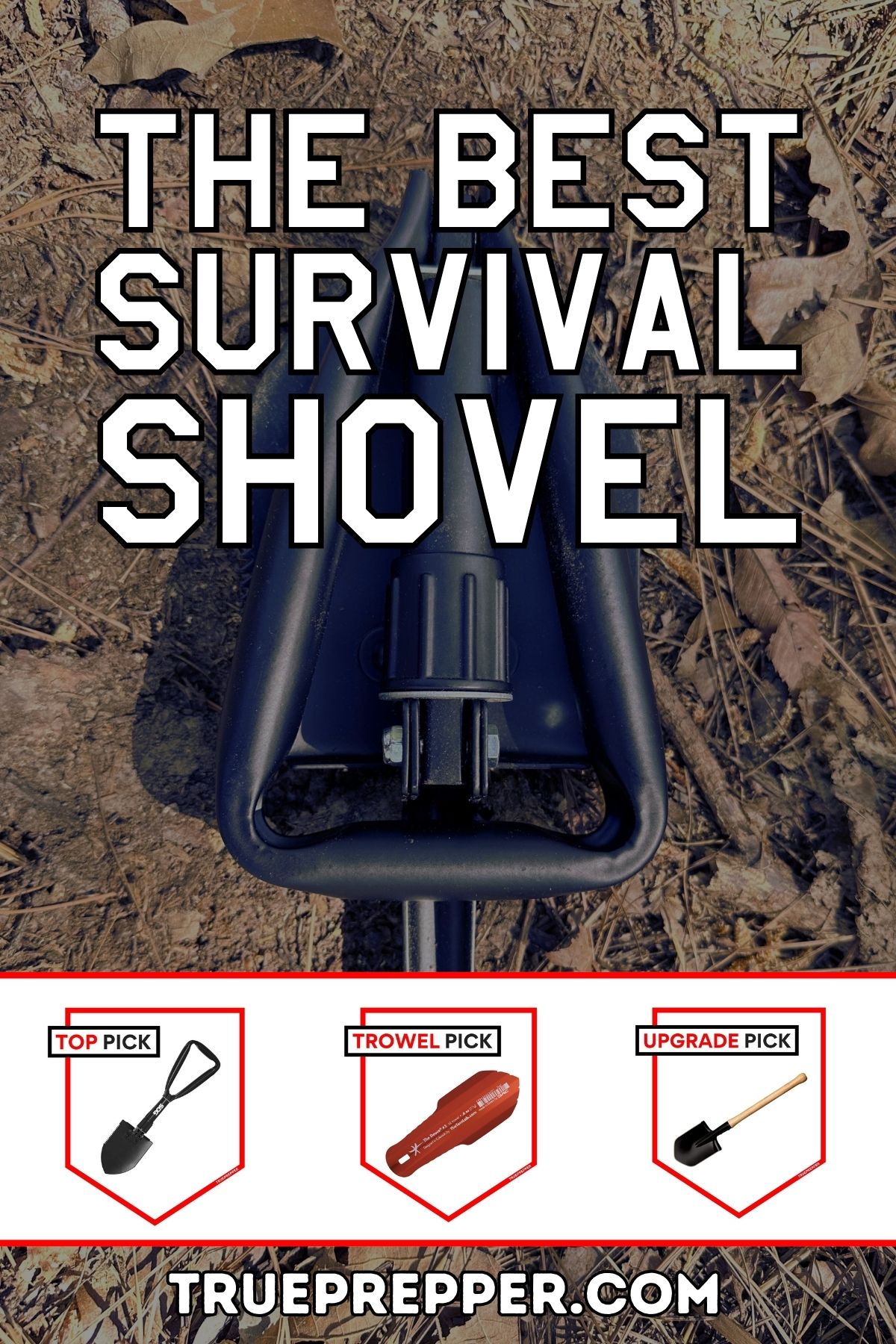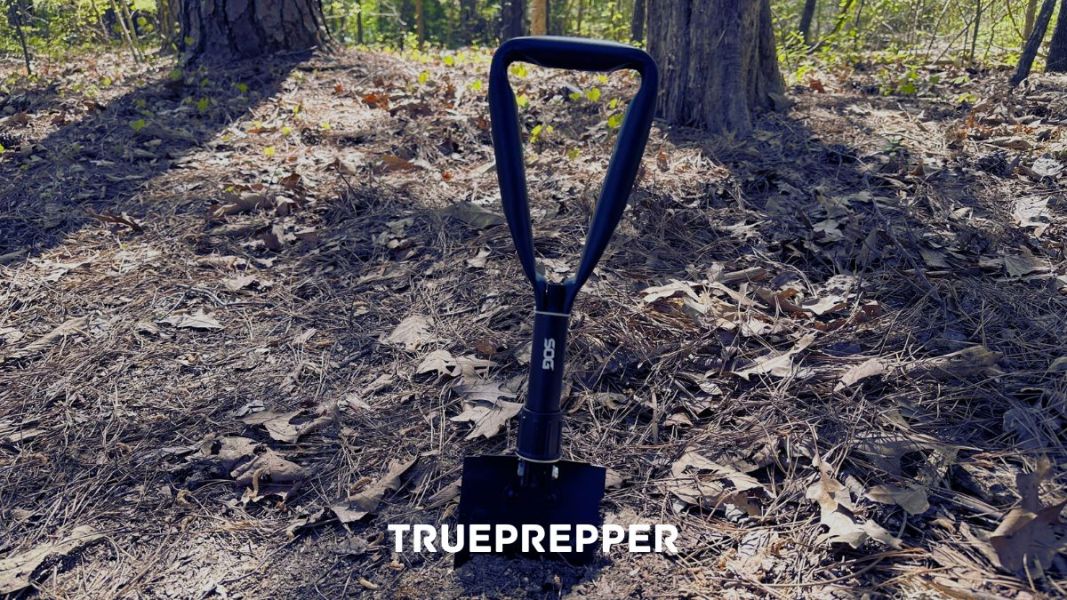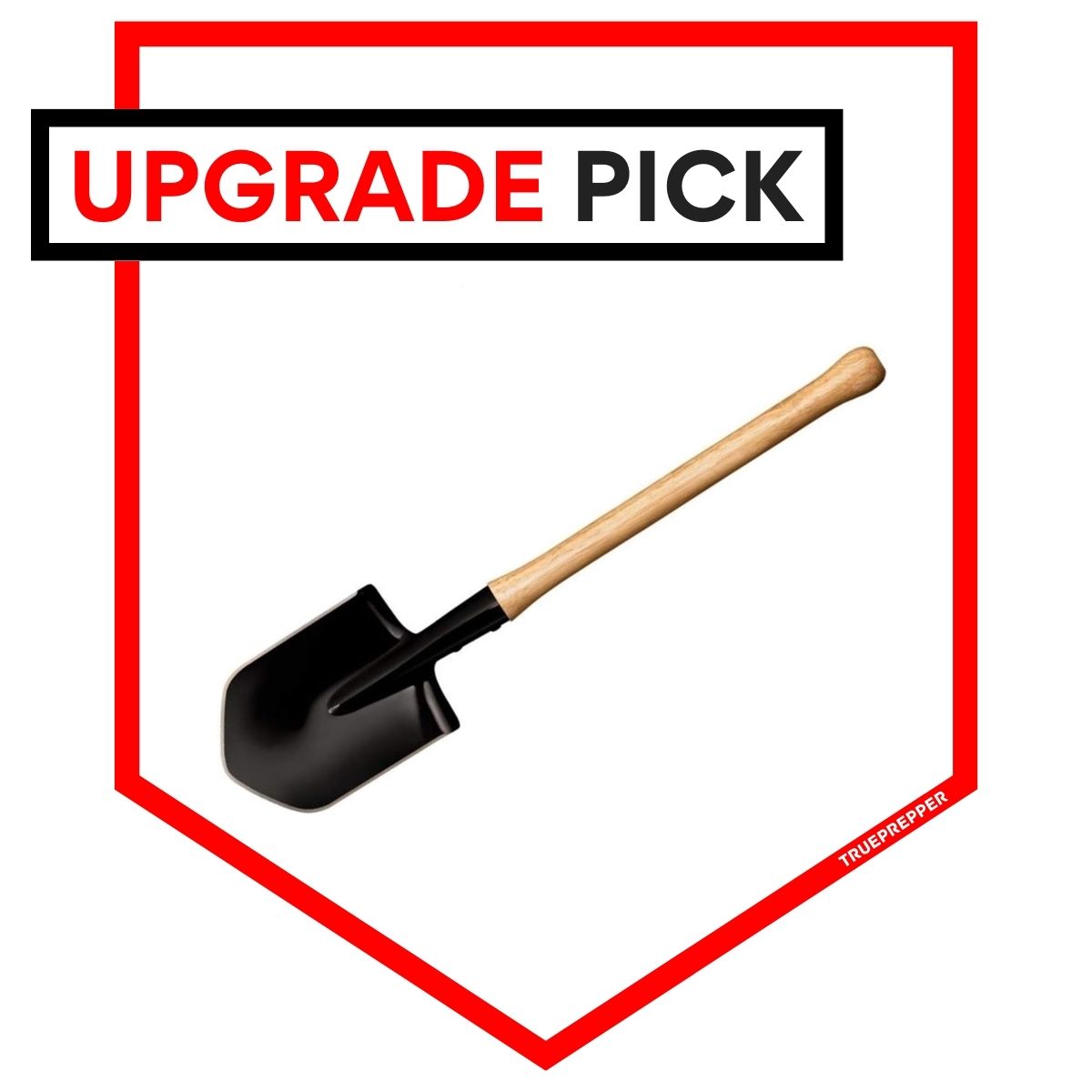Best Survival Shovels for Bug Out Digging
When it comes to survival and outdoor preparedness, a reliable and versatile shovel can be an indispensable tool. The best survival shovels are designed to handle a wide range of tasks, from digging and trenching to chopping and prying. Whether you’re camping, hiking, or preparing for emergencies, a high-quality survival shovel can be a valuable asset in various situations. There are many brands and types of shovels to choose from.
This is where we come in. We’ve researched the best survival shovels, put them to the test, and now the results are in: the overall best e-tool, a trowel option, and a larger upgrade option. If you want to be able to dig in any situation, any of our picks can be trusted in the trenches.
Contents (Jump to a Section)
The Best Survival Shovel
SOG Entrenching Tool
Indispensable, Collapsible, and Effective
An E-tool done right, SOG elevates the classic military folder and provides it at an unbeatable price.
*Price at time of publishing; check for price changes or sales.
Studies and Observations Group (SOG) was founded in 1986 as a specialty knife manufacturer (specifically reproducing the Vietnam-era SOG knife and later on the Seal Pups.) They’ve branched out since then, becoming a name well-known in the military for everything ranging from multi-tools to entrenching tools. And the latter is hard to beat.
While Leatherman and Gerber may give them a run for their money on multitools, even the Gerber E-tool doesn’t stand up to the value for the price the SOG E-tool provides. This collapsible shovel can be grabbed for a fantastic price and can pitch in for a wide range of digging activities, from digging shelter trenches to making catholes.
Here is how the shovel measures up:
- High-carbon tempered steel (easy to sharpen)
- Serrated edge
- Nylon case
- 18″ long (extended)
- 5″ W x 10″ L (folded)
- 24.5 ounces
With a great price and an effective design- it’s easy to see why the SOG Entrenching Tool is the best.
Best Survival Trowel
The Deuce
Ultralight, Effective, and US Made
Often imitated but never duplicated, get the original ultralight trowel made right here in the US.
*Price at time of publishing; check for price changes or sales.
This stamped aluminum trowel is fine-tuned simplicity at its best. Using the geometric shape and lightweight materials, you can a small shovel you can take anywhere and not even notice. This makes it perfect for mobile survival kits where every ounce matters.
There are plenty of cheap knockoffs out there of this trowel, but they aren’t even offered at a much more competitive price so they’re not worth considering.
Here is how the trowel measures up:
- Anodized US 7075-T6 aluminum
- Geometrically strengthened curve shape
- 6.8″ L x 2.8″ W
- 0.6 ounces
If you are looking for a lightweight shovel solution, TheTentLab Deuce Ultralight Trowel is what you need.
Upgrade Survival Shovel
Cold Steel Spetsnaz
Strong, Спецназ, and Proven
A design hailing from Soviet special forces, this shovel is a testament to how well simple can perform.
*Price at time of publishing; check for price changes or sales.
We could put a range of post-Soviet Russia jokes here, but this shovel isn’t a laughing matter. With a larger head and solid handle, this shovel won’t collapse down to fit in a bag but it is still small and lightweight enough to be portable. The length makes it much easier to use the foot ramps while still fitting in tight spaces.
The edges come sharp straight from the manufacturer (just like Cold Steel knives) and can be easily sharpened further. This model and design has been around for decades, and will probably be digging trenches for decades to come.
Here are the full details:
- Coated high-carbon steel (easy to sharpen)
- Hickory hardwood handle
- 5″ W x 30″ L
- 36 ounces
If you are looking for a proven winner, get the Cold Steel Spetsnaz Shovel.
Everything We Recommend
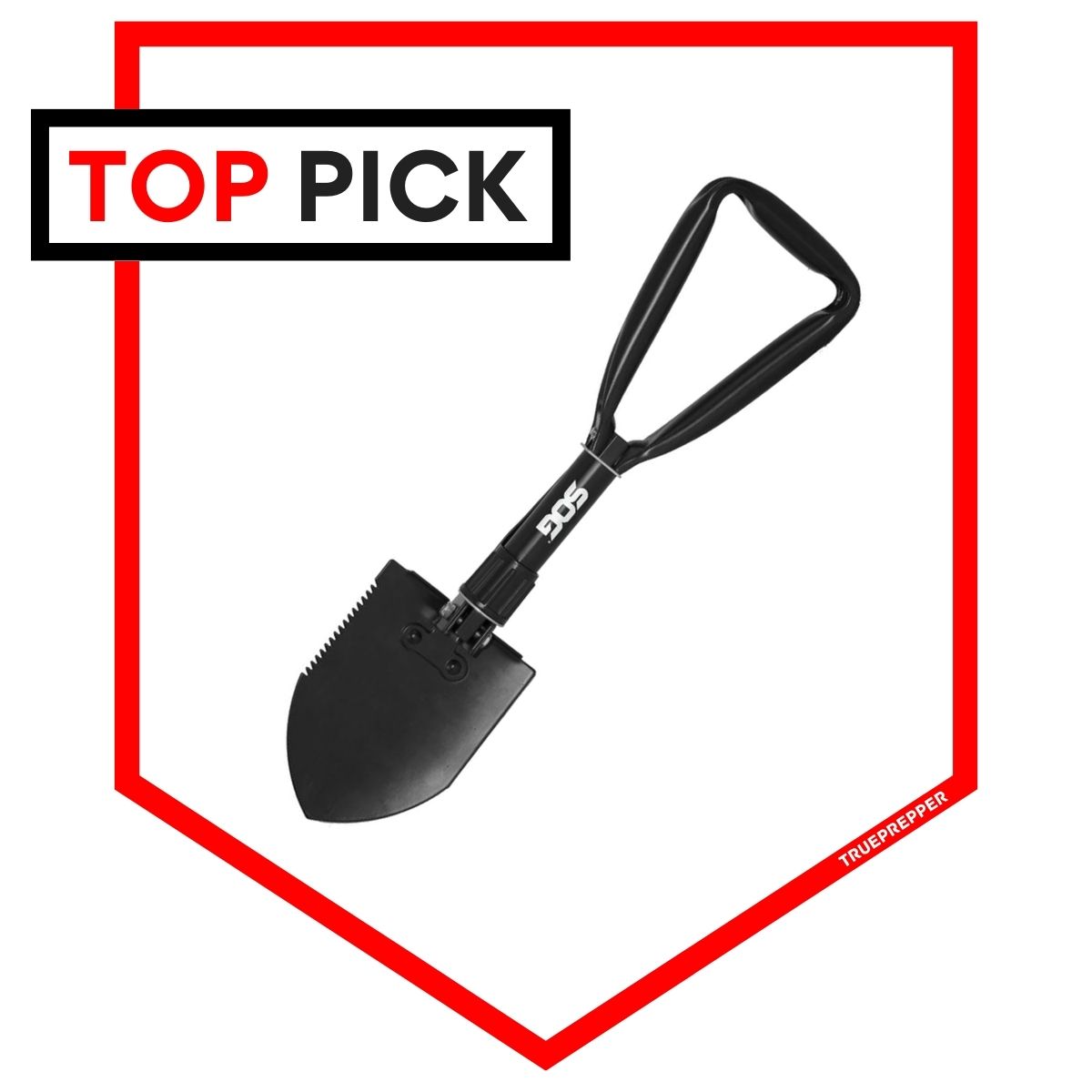
An E-tool done right, SOG elevates the classic military folder and provides it at an unbeatable price.
Where to Buy
*at time of reviewing
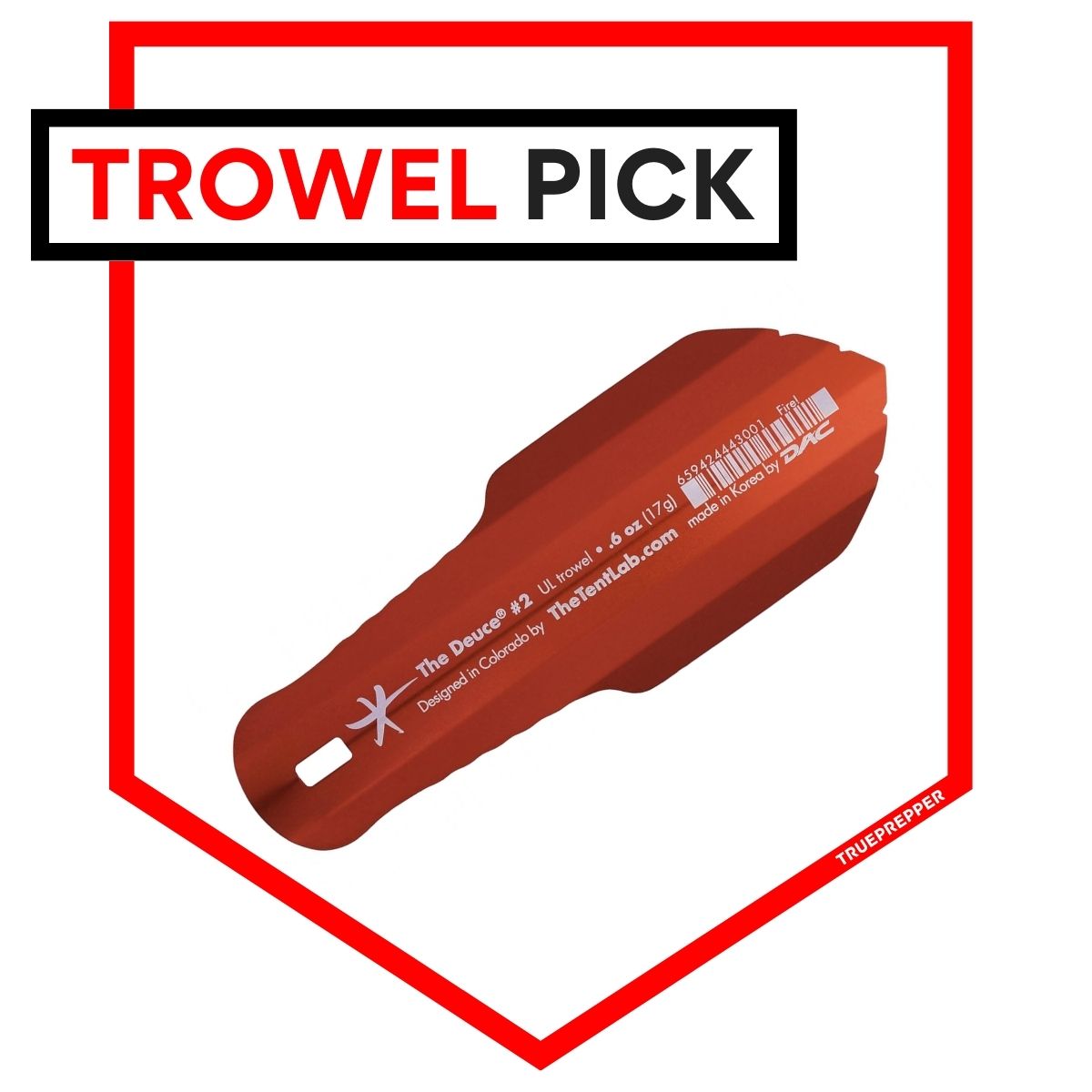
Often imitated but never duplicated, get the original ultralight trowel made right here in the US.
Where to Buy
*at time of reviewing
The Shovels We Compared
Our research narrowed the field down to several types of shovels and trowels that we compared: Gerber, SOG, TheTentLab, Cold Steel, Schrade, Rhino, Redcamp, and more.
You can see our full list of review criteria below in the What to Look For section, with an explanation for each.
We considered a wide range of digging tools and narrowed it down to some classic designs quickly with a marketplace full of Chinese-made tactical junk. Most of the reputable manufacturers have abandoned the ‘survival shovel’ with a dozen detachable sub-par tools and for good reason. All of the models that tried to do too much just ended up being worse shovels for it.
We’re always looking for new and better gear, so if you have a shovel or trowel that you swear by, let us know in the comments. We review most of our tested gear annually so we can try to get it in the next roundup round and see if it will beat out our top picks.
Shovel vs. Trowel
A shovel and a trowel are both tools used for digging, but they have distinct differences in terms of design, purpose, and usage:
- Size and Shape: A shovel is larger and longer than a trowel. It has a long handle and a broad, scooping blade that is curved or pointed. A trowel, on the other hand, is smaller and more compact. It typically has a short handle and a flat, rectangular, or triangular blade.
- Purpose: Shovels are primarily designed for digging and moving larger amounts of soil, gravel, or other materials. For survival, they are commonly used for tasks like digging shelter ditches, securing shelter poles in the ground, or fire management. Trowels, on the other hand, are more precise tools used for smaller-scale tasks such as gardening, digging catholes, or working in confined spaces.
- Blade Design: Shovels have a broader blade with a curved or pointed shape that allows for efficient lifting and moving of soil or other materials. Survival shovels are often reinforced and can be serrated or have a sharpened edge for cutting through roots or tough ground. Trowels have a flat or slightly concave blade that is usually not as wide as a shovel’s blade. The blade of a trowel is designed for precision work, such as scooping and maneuvering soil around plants.
- Handle Length: Shovels typically have long handles, which provide leverage and make it easier to dig and lift heavy loads. The long handle allows the user to stand upright while using the tool, reducing strain on the back. Trowels, on the other hand, usually have shorter handles, allowing for better control and maneuverability in tight spaces or when working at ground level.
While both tools are used for digging, shovels are larger, designed for moving larger amounts of material, and suitable for heavier-duty tasks. Trowels are smaller, used for more precise gardening work, and better suited for working in confined spaces or digging catholes. Which one you pick for survival is up to you.
What to Look For
The best survival shovel has several important features to look for:
- Value
- Functionality
- Size & Weight
- Versatility
- Durability
When you get the right blend of these, you can find a shovel that you can rely on for a wide range of situations- ranging from quick catholes to elaborate earth shelters and everything in between. Below, we break down what each of these features means for the survival-oriented shovels that truly set themselves apart.
Value: Cost vs. Benefit
The amount of money you spend on something like a shovel shouldn’t blow out your entire budget. If you are getting one for a survival kit rather than regular use, it may not make sense to spend much on a folding shovel just to use it infrequently.
You never want to spend too much money on one thing when it comes to tools. It’s better to diversify your survival gear to make sure you are covered for a wide range of scenarios.
Functionality
Shovels are made for digging. At some point, some manufacturers lost sight of that as they added dozen of features to ‘tactical’ marketed shovels. With cheap hollow steel handles, these shovels simply didn’t last in our tests.
We weren’t surprised- we’ve seen this with survival knives too. As it turns out, there are very few things being both as functional and versatile as a multitool.
Size & Weight
Traditional shovels weigh more than a few pounds and are too long to stash out of sight in a vehicle or survival kit. Weight and size are always a consideration for mobile kits, and it was a big consideration in our review. Our largest pick was 30″ long and slightly under two pounds, and plenty of considerations will need to be addressed to even fit that in an INCH bag.
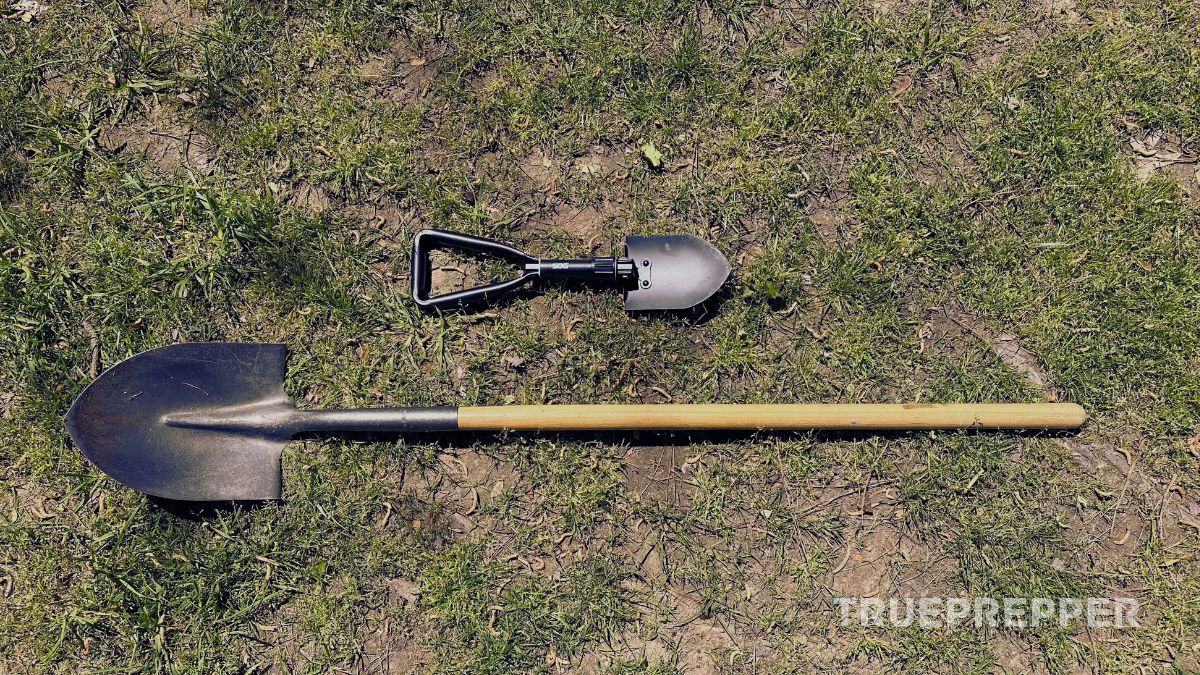
Luckily, you can go all the way down to a fraction of an ounce with an ultralight trowel. This is one of the better solutions if you don’t plan on moving large amounts of dirt, as we discussed in the shovel vs. trowel debate above.
Versatility
Entrenching tools collapse down so they can work for a wide range of kits, but they also provide extra versatility in their adjustable head. You can configure most E-tools to be a pickaxe to get through hard ground and stubborn roots.
Other E-tools go beyond that, with saws and more tools able to be attached and configured, but we didn’t have much success in the durability department of those options.
Durability
When it comes down to it, your shovel needs to be able to take a beating. You smash it into the ground, stomp on it, and often leverage all of your weight on the handle. If your shovel can’t keep up then what’s the point?
The weakest point is usually exposed by that last task we mention: leveraging the handle. If you use the shovel on a fulcrum, it can put extreme stress at a point where the handle is contacting that fulcrum. Try not to make that spot where a wooden handle or the adjustable pin on an e-tool is.
Who Needs a Survival Shovel?
Survival shovels aren’t for all preppers, but they are a standard inclusion for those anticipating getting their hands dirty. If you can dig a makeshift trench, an E-tool probably makes sense for your mobile kit as a versatile shelter tool. If not, a trowel is probably a better option for making catholes.
You’ll find survival shovels as an essential item in this kit:
We suggest them for:
We recommend considering them for (depending on your situation):
Survival shovels always have uses outside of survival kits too, like digging in confined areas.
How We Review Products: We research thoroughly before selecting the best products to review. We have vast prepping and survival experience and bring in outside experts when needed. Hours on end are spent testing gear in stressful conditions and using specialized testing gear to verify claims. We assign performance criteria and impartially rate each tested item. Learn more about how we test.
Sources and References
All of our experience and the testing we do to determine the best survival shovel is useless without listing our research sources and references. We leaned on these for the book knowledge that we paired with our hands-on testing and practical survival experience:
Freivalds, A. (1986). The ergonomics of shoveling and shovel design—a review of the literature. Ergonomics. Volume 29. Issue 1. Pages 3-18. (Source)
Brown, R. (2012). The Infantry Squad: Decisive Force Now and in the Future. Defense Technical Information Center. (Source)
Wise, N. (2014). An intimate history of digging in the Australian army during the Kokoda campaign of 1942. Labour History. Issue 107. Pages 21-34. (Source)
The Final Word
Shovels are a unique tool that can help us move earth quickly when we need to. You can use them to make shelter, protective trenches, or just for digging a cathole.
Here are a few other guides and reviews our subscribers have found helpful:
- The Best Ferro Rod for Survival Fire Starting
- The Best Survival Water Filter | Portable and Stationary
- INCH Bag List, Guide, and Checklist
We presented quite a lot of information, but as always: if you have any questions let us know and we would be happy to help. Our research and testing found the SOG Entrenching Tool to be the best option given its value, functionality, size/weight, versatility, and durability.
Keep exploring, stay prepared, and be safe.
You’ve Been Missing Out
Join the 2+ million preppers that rely on our prepping advice by subscribing to TruePrepper.- Practical guides and tips
- Useful survival giveaways
- Free, forever
- < 0.4% of people unsubscribe
